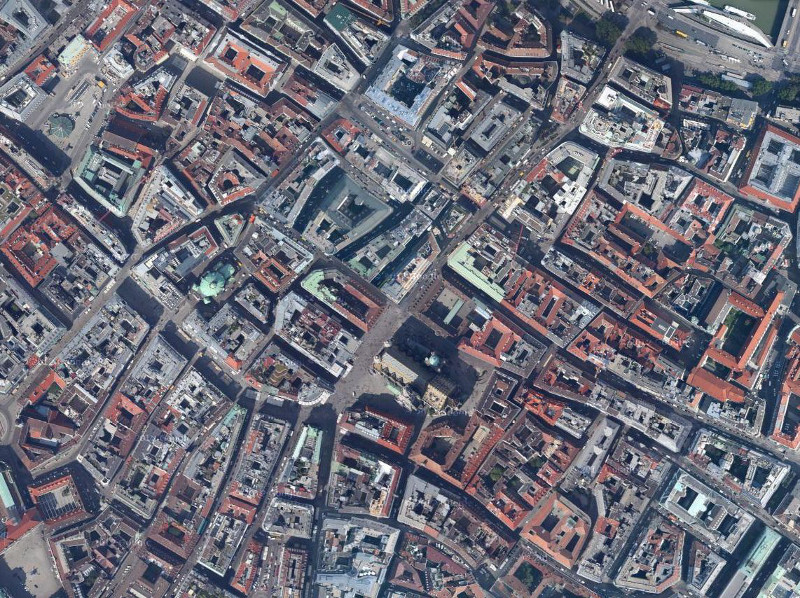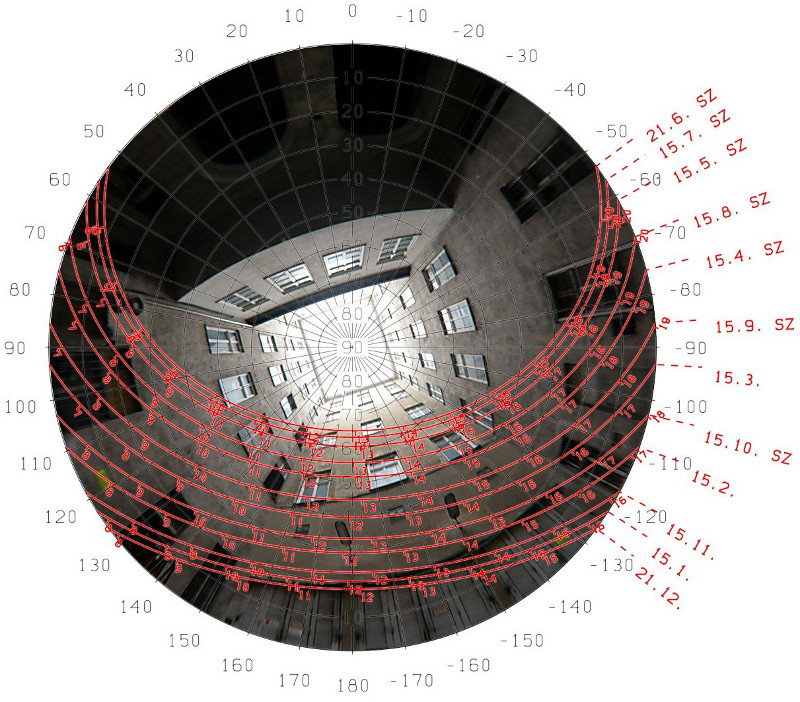From courtyards to lightyards
Short Description
Starting point/Motivation
Nowadays the focus in retrofitting buildings is usually on enhancing the thermal properties of building envelopes. However, especially in urban regions courtyards are often providing high potential in terms of daylighting. Using optimal materials with appropriate surface reflectance properties the daylighting of adjacent rooms can be improved significantly. Lower floors of multi-story buildings particularly benefit from that. Exemplary evaluations show that simply increasing the reflectance in the courtyard yields quadrupled daylighting values in the lowest floor. Using specular materials can bring up the daylighting levels even up ten times compared to the existing situation.
Contents and Objectives
To clarify how to transform courtyards into optimal "lightyards", the following questions have been addressed within this project:
- Which materials have to be used for optimal daylighting? How do these materials need to be aligned in the courtyard?
- Which materials available on the market can be used for it? Can materials be custom-built to meet theoretical requirements?
- Which kind of architectural requirements exist? Which engineering restrictions might appear? Which standards have to be met?
- Is it possible to generate optimal courtyards with a simplified calculation module and thus allow architects, façade designers and building owners to design them?
Methods
The project "Lightyard" should answer these questions as a feasibility study and guarantee that continuing research and developments on this topic are promising. The theoretical optimization is based on considerations of basic principles and complemented and validated by daylight simulations. Market, literature and engineering standard research provide necessary input from practice. Deriving the main parameters of a courtyard was the basis for the concept of a simplified "courtyard calculator" for designing optimized solutions.
Results
The main results are the verification of the feasibility of optimized material concepts for courtyards and the proof of concept of the corresponding calculation tool. In detail, the following results were achieved:
- Feasibility study for optimal daylighting of rooms adjacent to courtyards
- Modular concept for materials
- Catalog of requirements regarding daylighting, structural engineering and costs for materials used in courtyards
- Listing of selected optimized courtyard concepts including their evaluation
- Documentation of necessary further investigations and development
- Draft evaluation of the "courtyard calculator"
By optimally using courtyards from a lighting point of view, daylighting (and with that energy savings from electric lighting) as well as visual quality is increased. Numerous rooms adjacent to courtyards can thus be made utilizable as living space or working area.
Prospects / Suggestions for future research
In cooperation with academic partners (impact on building physics and thermal performance) and industry (implementation potential) the practical realization of the concepts shall be expedited. This will possibly be carried out in the framework of a cooperative R&D project yet to be submitted.
Project Partners
Project management
Bartenbach GmbH
Dipl.-Ing. Dr. David Geisler-Moroder
Contact Address
Bartenbach GmbH
Mag. Wilfried Pohl
Rinner Straße 14
A-6071 Aldrans
Tel.: +43 (512) 3338-0
E-Mail: info@bartenbach.com
Web: www.bartenbach.com


